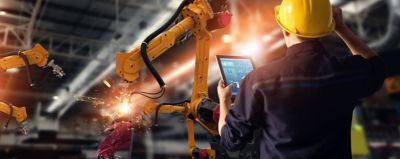Essentially, fixed speed rotary screw machines deliver the same levels of air supply throughout the day. They're great for single jobs and workflow where you know demand won't change. These machines tend to also have the lowest initial cost of investment for a rotary screw air compressor.
It might seem overwhelming how many different compressed air solutions are on the market. This guide is here to help you navigate two air compressors, piston and rotary screw, and what's involved in operating them.
Both these types come in a variety of sizes, and oil-free and oil-injected engines. To understand what makes the most sense for your application(s), it's important to consider:
● Budget and energy efficiency
● Amount of air pressure desired (psi)
● Clean air standards
● Frequency of use
● Importance of remote monitoring tools
Read on to go deeper into how these themes will inform the right equipment. Whether you're purchasing compressed air equipment for the first time, or upgrading your set-up, we hope you find the following information useful.
Rotary screw
The most efficient choice, rotary screw air compressors, are available with fixed speed and variable speed drive (VSD) motors. With the various configurations for rotary screw equipment, there's a solution to meet most budgets.
That being said, these machines are typically more expensive to buy than piston air compressors. However, since they're more advanced, they generally save you money throughout their lifespan (versus piston machines). Also, unlike piston air compressors, which have resting periods, rotary screw machines can run all day.
If you'd like to learn more about the advantages of rotary screw air compressor types, read our article on this topic. We'll briefly go into key differences below.
Advanced equipment for rotary screw compressors
Both fixed speed and VSD air compressors can be fitted with monitoring and control tools to maximize efficiency. These devices provide features including analytics, timers and maintenance alerts.
Piston
Piston air compressors are a popular choice for their comparatively cheap initial investment. They're useful for small to medium-sized worksites and jobs, and have a fairly simple configuration. However, as mentioned above, piston machines can't run all day, and need downtime.
In our article on piston air compressor applications, we go further into the advantages of this type of equipment. Essentially, they're great for DIY projects and compact job sites. Since these machines have a relatively small footprint size, they don't require a large air compressor closet.
There are also silent models for spaces where low noise levels are important. These machines can be placed near the usage point.
Oil-free vs. oil-injected
You'll come across oil-free and oil-injected types of air compressors when browsing piston and rotary screw machines. Essentially, what you decide is determined by your industry. For example, when working in sensitive industries like medical, food and beverage, and chemical, an oil-free model is going to be your best option.
Regarding oil-free vs. oil-injected, it all comes down to how the machine is lubricated. Oil-injected air compressors use oil to reduce engine friction and keep temperatures low. They're suitable for most uses and produce high-quality air. There are also special filters to reduce oil contamination in the output.
However, as mentioned above, the risk of microscopic amounts of oil is not suitable for some situations. In these cases, you'll want a machine that uses other means to keep the air compressor cool and running smoothly. Generally, this is solved through fans and other features. Since oil-free machines need additional components, they're generally more expensive.
Whichever option you choose, rest assured you'll receive best-in-class machines. We strive to help you deliver the cleanest possible air for your work and customers.
Choosing between the two air compressors
We hope this guide is useful for understanding the two air compressors mentioned, piston and rotary screw. If you're still undecided on what makes the most sense for you, we're here to help.
Feel free to get in touch today, and we'll be happy to point you in the right direction. Our team of experts will assess and evaluate your unique work situation. We look forward to hearing from you.
Looking for the right product for your application?
Get tailored advice
Still have questions after reading? Our expert is ready to help you make sense of it all and guide you to the best solution.
Write to an Expert Today – Get the answers you need.





